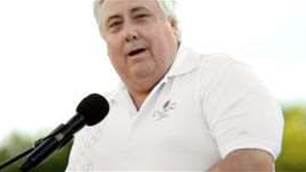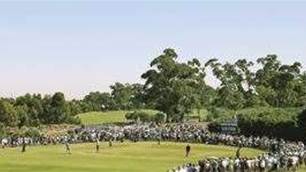The demise of Laguna Whitsundays can’t be attributed to oversupply of courses.
Whenever an Australian golf course runs into serious trouble or, even worse, closes its doors it isn’t long before people start asking questions about the state of the game in this country. The one question that seems to increasingly pop-up these days is: “Does Australia have too many golf courses?”
If the opinions being expressed on various golf forums and Twitter feeds are anything to go by, it appears there are a growing number of golfers out there who believe there is an oversupply of courses in this country. Some have even suggested there will inevitably be a “correction” to this number with a wave of club/course closures as income dries up because of declining membership numbers and participation rates.
I don’t subscribe to this view at all.
We do have a lot of golf courses in Australia. We rank third behind Scotland and New Zealand for number of courses per head of population. This is why there are more than one million rounds of golf played across the nation every year. The game is far more accessible and affordable than most other countries around the world, which might also explain why we punch well above our weight in producing world-class players. The fact you can get change from $50 for a round of golf on a quality golf course, no matter where you travel throughout Australia, is something envied by visiting golfers from overseas. (You can check out our recommended 50 courses you can play for $50 or less on page 103).
For one reason or another, a lot of golf clubs are doing it tough. Courses on NSW’s North Coast and throughout south-east Queensland began the year with floods and weeks, rather than days, of no play put a huge dent in income. While other clubs, like some along the Murray River, were not so very long ago spending thousands of dollars buying water to keep their courses alive during the drought.
Membership numbers, and the guaranteed revenue from annual fees, are gradually decreasing for a lot of clubs and generally have been heading south for much of the past decade.
This has been attributed to people being time-poor or the high cost, especially in metropolitan areas, associated with being a member of a club.
The Australian golfing landscape has changed a lot since the early ’90s. With a larger number of pay-for-play public access golf courses becoming available, golfers have had more choice than ever as to where they are going to spend their hard-earned dollars.
In 2012, we are now spoilt for choice but this doesn’t mean we have too many courses. Obviously, there will be some clubs/courses that will be forced to shut their doors over the next ten years. But it won’t come in a wave like it did in the United States at the height of the GFC when more courses closed than opened during 2009-2010.
The argument that Australia has too many courses, or not enough golfers to support new courses, raised its head again when it was announced last month that the Greg Norman-designed Dunes Port Hughes golf course development on South Australia’s Yorke Peninsula had been placed in receivership with more than $13 million in debts.
I’ll leave it up to the experts as to where it all went wrong but I suspect the timing of the development and its location had a negative effect on land and property sales, which were needed to fund the project. While nine holes opened for play last year, it is not known how long it will be before remaining holes will be completed.
The situation at Port Hughes cannot be attributed to golf course oversupply. Nor can the closure of Laguna Whitsundays earlier this year.
Laguna Whitsundays’ Turtle Point course had been ranked among Australia’s best courses for more than a decade, while the five-star resort was once included in a list of the 100 finest golf resorts in the world. When the gates were closed for the last time in February, the once luxurious resort centre and The Lodge accommodation was sadly overgrown with vines and looked like the set of a Jurassic Park movie. The demise of Laguna Whitsundays is a story for another day, but it’s safe to say, given its relatively isolated location, it didn’t fold because there was a better golfing option down the road.
Yes, times are tough for clubs and courses. But, in my opinion, any golf club committee or general manager looking at increasing long-term participation numbers and, ultimately, memberships would do well to always put their greatest asset, the golf course, first and foremost over everything.
I am often surprised at the number of clubs that put their clubhouse activities and facilities ahead of what lies outside. Most clubs rely heavily on revenue coming through the clubhouse from weddings, functions and patrons playing the pokies. That’s fine, but make sure any money made inside gets invested back into the main attraction outside.
It seems simple but some clubs, a minority, just don’t get it.
You can see it in their marketing. For example, a Queensland club – competing with four courses within close driving distance in a tourist region – recently placed an advertisement in a widely circulated newspaper promoting the arrival of five new poker machines. I wanted to jump on a plane and go and check them out! I wish that club well.
Clubs that invest wisely in maintaining and improving the challenge of their course are usually the ones with full competition fields three times a week and have a steady flow of inquiries from golfers wanting to come and play their layout. A course offering a golf experience that is always fun and interesting will never have a shortage of players looking for a game and, perhaps, wanting to become a member.
WHAT DO YOU THINK?
Does Australia have too many golf courses? Will we see a lot of clubs go to the wall over the next few years because of player numbers? Let me know your thoughts via email on golf@golfaustralia.com.au or leave a comment below. Follow me on Twitter @BrendanJames2
Related Articles

Palmer Has Titantic Opportunity

Tossing Bricks & Bouquets














